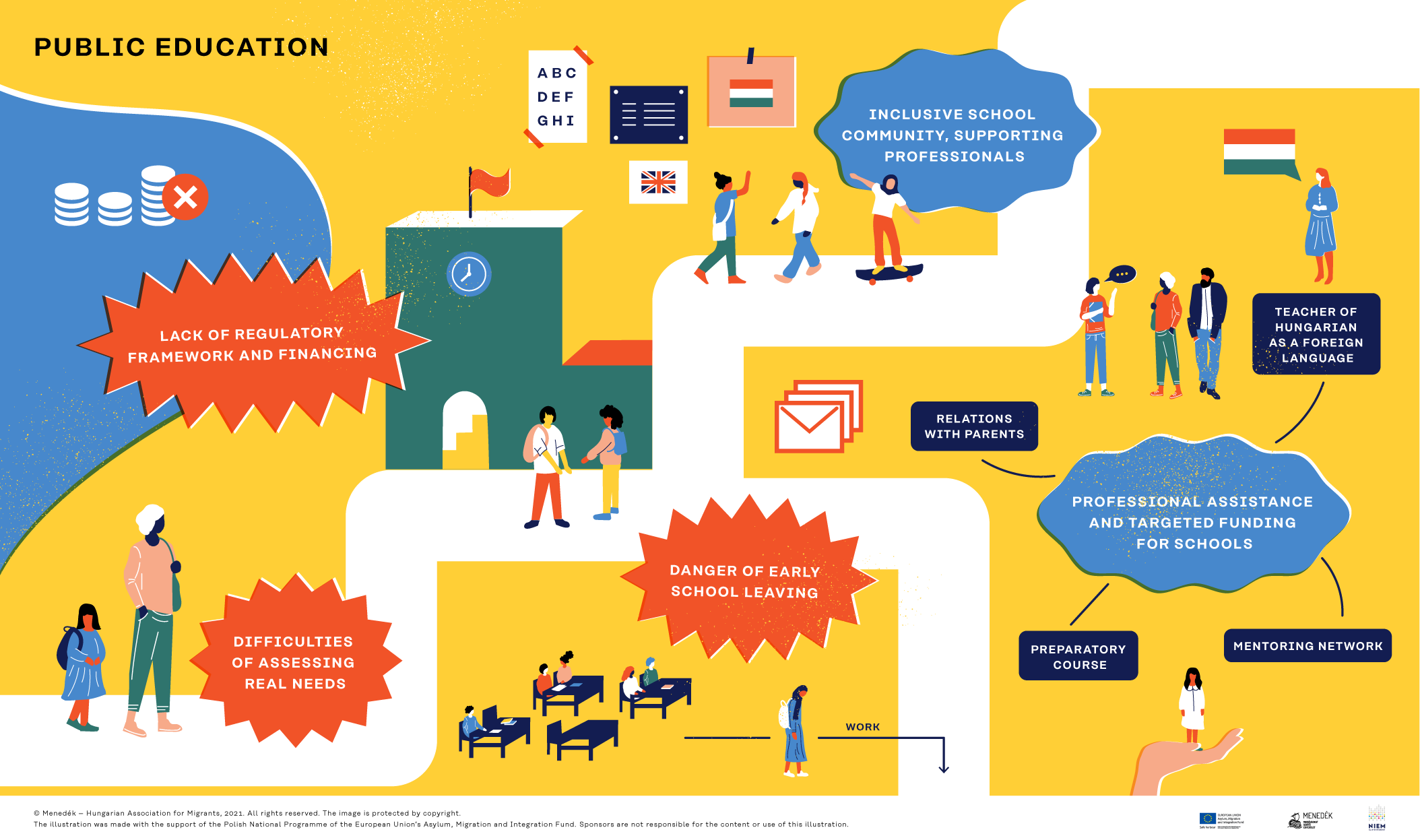
The Hungarian public education system is among the least developed in Europe in terms of integration opportunities and support for foreign (migrant and refugee) students. Although they have the right (and even the obligation) to participate in public education, there is a lack of subsidies and targeted programs to ensure equal opportunities. The system does not help them to catch up in Hungarian language (and education in the mother tongue is not available either). For this reason, the success of their further education is also in doubt.
In the absence of policy regulation, good practices have been developed in some educational institutions and in targeted programs of civic and church organizations to promote the integration of refugee children and students. These were helped by the 2005 recommendations of the Ministry of Education, as well as the special grants once available for foreign children, which could provide an opportunity and an additional source for professional support for pupils with a refugee and migrant background. Other programs were made possible by the tender funds of the European Union (EIF, ERF, AMIF), but after 2015 the Hungarian state did not provide them any longer. With the support of the UN and other international donors, some NGOs are still conducting educational activities among refugee children.
In the absence of central coordination and assistance, the institutional system is not able to examine children for special needs (eg language barriers) in relation to school maturity or other special educational needs. There are also a number of ways in which children and pupils who have received international protection can be accepted for their previous studies (whether in the issuing country or during transit). Some heads of institutions accept students’ statements made during the asylum process, while others suggest a differential exam or do not consider completed studies.
While access to pre-school and primary school for refugee children is mostly ensured, their access to secondary and tertiary education is very limited due to the above. It worsens the chances that the compulsory school age is 16, which in many cases leads to the early drop-out of refugee students. Schools do not have many tools to keep students who want to or are forced to work in the system, and they do not always undertake their enrollment on that basis.
In schools with few refugee children, a “cold integration” strategy is more common, with the educator expecting the child to integrate into the classroom on their own. In some cases, this strategy may work, but problems may remain latent and the refugee child may become isolated.
However, there are some schools that have received or are hosting larger numbers of migrant and refugee students. Based on the good practices of these institutions, it can be said that translating enrollment information materials into foreign languages, contacting parents with the help of intercultural professionals, and preparatory, mentoring (often voluntary) sessions to help with entry and stay can greatly help the integration of children with refugee or migrant backgrounds. It is extremely useful if Hungarian as a foreign language (MID) teacher is also present in the institution. By incorporating MID into the curriculum (for example, instead of a Hungarian literature subject or in separate group lessons), students can participate in education in an integrated way. It is also important to develop a system of assessment and grading, and to sensitize students belonging to the majority society.
At the system level, it would be important to provide comprehensive professional assistance (eg mentoring network), special support for schools for refugee children, as well as the training of practicing teachers (eg MID) and the integration of refugee-specific curricula in teacher training. There would be a need for clear guidance on the acceptance of previous studies and for professional motivation of institutions to receive refugee children. It could be useful to restore compulsory schooling to 18 years and to assess knowledge and skills that are not based on knowledge of the Hungarian language during admission procedures.
